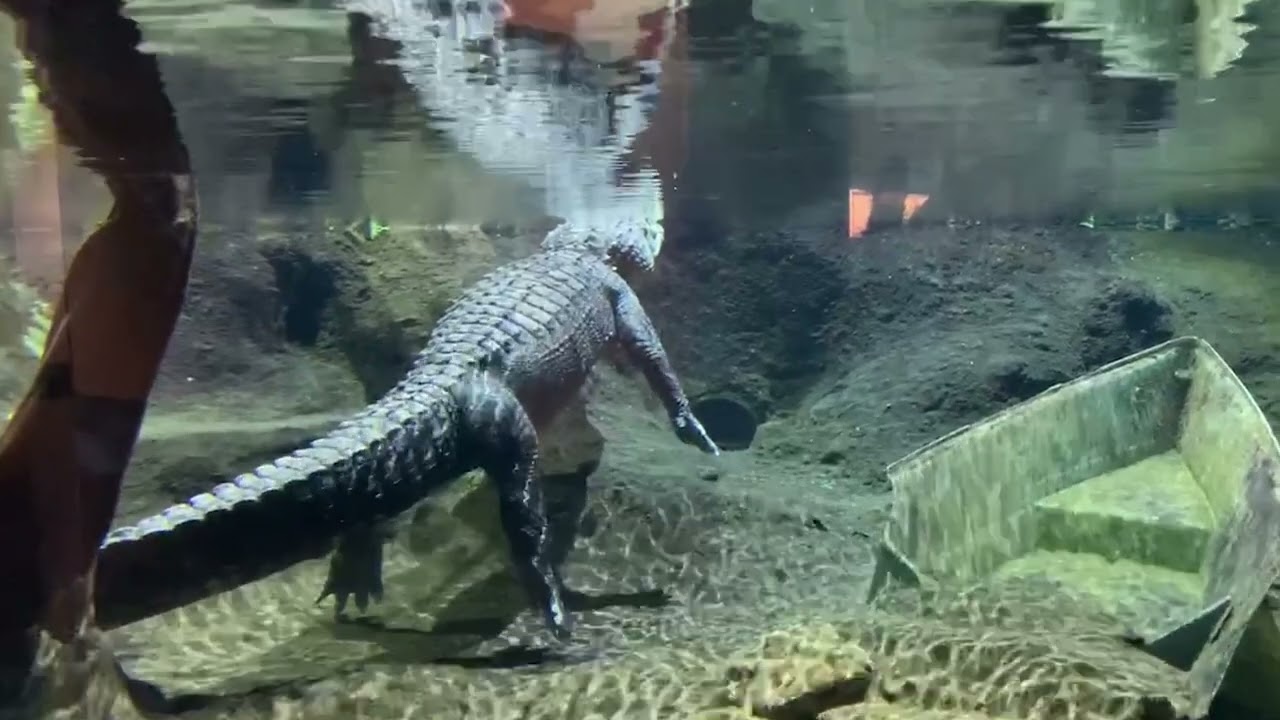- Introduction to the North American Alligator: Characteristics and Habitat
- Understanding the Role of Zoos in Alligator Conservation Efforts
- Behavioral Patterns and Adaptations of the North American Alligator
- Trends and Challenges in Alligator Conservation and Management
- The Importance of Public Education and Engagement in Wildlife Conservation
The North American Alligator, a formidable reptile, is an intriguing subject for both scientists and wildlife enthusiasts. Known scientifically as Alligator mississippiensis, this species is native to the southeastern United States. This reptile’s characteristics, behavior, and conservation offer rich areas for examination.
The North American Alligator is primarily found in freshwater environments, such as marshes, swamps, and rivers. This habitat is crucial for their survival and reflects their adaptability to a variety of ecological conditions. Ranging between 10 to 15 feet in length, alligators are perfectly designed for their aquatic environments with their powerful tails and webbed feet. The dark, armored skin provides excellent camouflage within murky waters. These physical traits are not just adaptations for their environment; they play vital roles in the alligator’s ability to hunt and elude predators.
In terms of diet, alligators are opportunistic feeders. Their diet consists of fish, birds, mammals, and even other reptiles. Young alligators primarily consume insects and small fish. This varied diet highlights their adaptability and survival skills. The species displays remarkable longevity, with lifespans often exceeding 50 years in the wild.
Understanding the role of zoos in alligator conservation is essential. Zoos have long committed to the protection and breeding of alligators, contributing significantly to their population recovery. In the mid-20th century, the American alligator was hunted to near extinction. Through concerted conservation efforts, zoos and wildlife reserves played a pivotal role in supervising breeding programs and maintaining genetic diversity. This coordinated approach helped bring their numbers back, and the species was removed from the endangered list in 1987.
Zoos do more than serve as captive habitats; they act as educational platforms. They provide insights into the ecological needs and behaviors of the North American Alligator. By conducting research and providing data to support conservation policies, zoos are instrumental in the global understanding of wildlife management.
The behavioral patterns of the North American Alligator are fascinating and complex. They are largely solitary animals, except during mating season. Communication among alligators includes an array of sounds, such as bellowing, particularly during the mating season. These vocalizations are not only a part of their reproductive behavior but are also a means of establishing territory among males. Female alligators demonstrate nurturing behavior, guarding their nests and attending to hatchlings, which is atypical for reptiles.
Adaptations play a crucial role in the survival of alligators. They have a high tolerance for varying temperatures, a trait that is beneficial in the fluctuating climates of their habitats. During colder weather, they can enter a state called brumation, similar to hibernation, which allows them to conserve energy. This ability to adapt physiologically is a testament to their resilience.
The trends and challenges in alligator conservation and management remain ongoing. While the species has recovered significantly, threats persist, particularly from habitat destruction and climate change. Wetland drainage, pollution, and urban development are major challenges that impact the natural habitats of alligators. These threats require continuous efforts from conservationists to mitigate.
Conservation strategies involve habitat protection, public awareness programs, and legal protections. Laws such as the Endangered Species Act have been instrumental in providing a framework for the protection of alligators and their ecosystems. Efforts to restore water quality and wetland areas are also crucial in supporting the natural habitats these reptiles depend on.
Public education and engagement are crucial for successful wildlife conservation. Educating the public about alligators helps dispel myths and reduce unwarranted fears. Zoos, through their interactive programs and exhibits, play a vital role in fostering a connection between people and wildlife. This connection is essential in cultivating an appreciation for conservation efforts.
Collaborative projects between zoos, wildlife agencies, and communities help extend the message of conservation beyond the zoo’s grounds. Citizen science projects and school programs can increase public knowledge and promote environmental stewardship.
The North American Alligator not only represents a conservation success story but also serves as a reminder of the ongoing efforts required to maintain healthy ecosystems. Preservation of their habitats and public education are integral to ensuring their future. The continued interest in their biology and ecology from the scientific community will contribute to the enduring understanding and protection of this remarkable species. The North American Alligator remains a vital part of the biodiversity of North America, showcasing the importance of collaborative conservation efforts.
*****
Source Description


